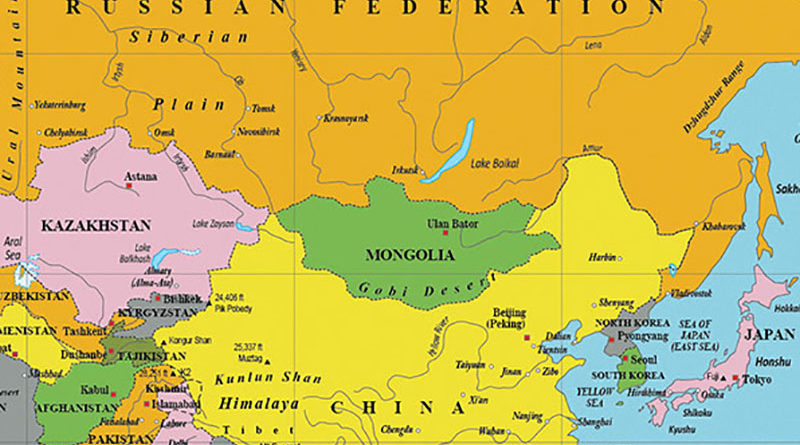Focus: GS-I Art and Culture
Why in news?
The Ministry of Culture has taken up the project of reprinting of 108 volumes of Mongolian Kanjur under the National Mission for Manuscripts (NMM).
Mongolian Kanjur
Kanjur / Kangyur
- The Tibetan Buddhist canon is a loosely defined list of sacred texts recognized by various schools of Tibetan Buddhism, comprising the Kangyur or Kanjur.
- Kangyur or “Translated Words” consists of works in about 108 volumes supposed to have been spoken by the Buddha himself.
- All texts presumably had a Sanskrit original, although in many cases the Tibetan text was translated from Chinese or other languages.
Mongolian Knajur
- Mongolian Kanjur, the Buddhist canonical text in 108 volumes is considered to be the most important religious text in Mongolia, which is translated from Tibetian.
- In the Mongolian language ‘Kanjur’ means ‘Concise Orders’- the words of Lord Buddha in particular, and they are kept in almost every monastery.
- Knajur contains over 1000 title books belonging to the ancient Indian Tripitaka or three knowledge areas such as Sutraya, Vinaya, Abhidarma concepts which represent listening, meditating and creating abilities.
Destruction and revival of Kanjur
- During the socialist period, xylographs were destroyed in flames and monasteries were bereft of their sacred scriptures.
- During 1950s, Professor Raghu Vira obtained a microfilm copy of the rare Kanjur manuscripts and brought them to India, and, the Mongolian Kanjur in 108 volumes was published in India in 1970s.
India – Mongolia and Buddhism

- Buddhism was carried to Mongolia by Indian cultural and religious ambassadors during the early Christian era.
- Buddhists form the single largest religious denomination in Mongolia.
- India established formal diplomatic relations with Mongolia in 1955.
- The publication of Mongolian Kanjur by the Government of India for the Government of Mongolia will act as a symbol of cultural symphony between India and Mongolia.
National Mission for Manuscripts (NAMAMI)
- The National Mission for Manuscripts (NAMAMI) is an autonomous organisation under Ministry of Culture, Government of India, established to survey, locate and conserve Indian manuscripts.
- Aim of NAMAMI is to create national resource base for manuscripts, for enhancing their access, awareness and use for educational purposes.
- Indira Gandhi National Centre for the Arts (IGNCA) is the nodal agency for the execution of this project.
- The organisation works in the field of restoration and conservation Indian manuscripts, and their digitisation, to promote access and scholarship through research and publication.
- The Mission also runs a ‘Manuscripts Resource and Conservation Centre’, included in UNESCO’S, Memory of the World Register.
What is Manuscript?
Manuscript is a hand written records of the past on the surfaces of palm leaves, the bark of birch tree, vellum, papyrus, parchment, etc. For Example- Veda, Purana, Works of Kalidasa, Sangam Literature, Arthshastra of Kautilya etc.



